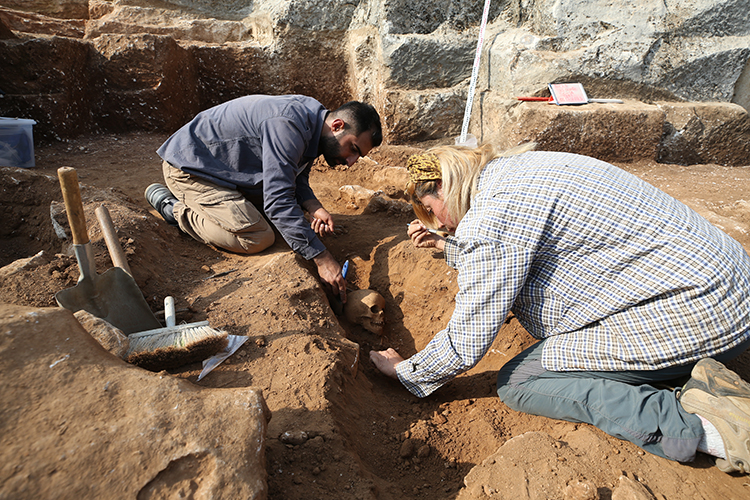
Graveyard of 54 children found in an old quarry
In the Kulp district of Diyarbakır in southeastern Türkiye, a graveyard of 54 children between the ages of 0-6 buried in what is believed to be an old quarry has been unearthed.
Archaeologists find it surprising that only children are buried in the area where 54 graves have been found so far.
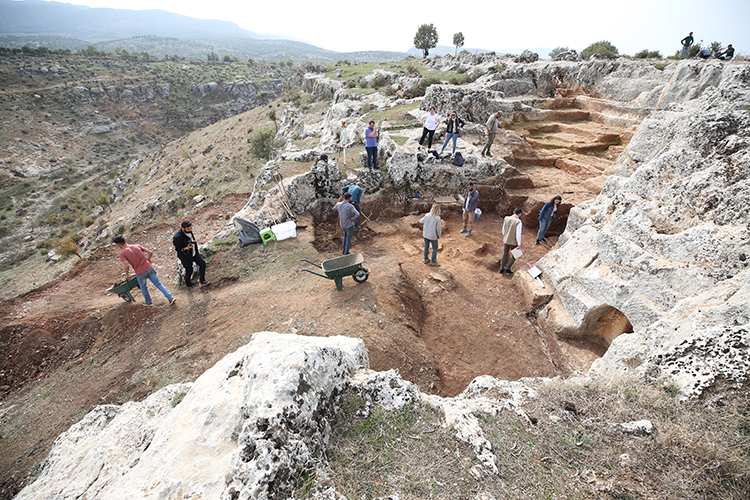
The remains of a 1500-year-old church were unearthed during archaeological excavations started after coins dating back to the Byzantine Emperor Anastasius I were found during surface surveys.
The excavations initiated by the Diyarbakır Museum Directorate in 2021 continued in an old quarry near the site of the church.
📣 Our WhatsApp channel is now LIVE! Stay up-to-date with the latest news and updates, just click here to follow us on WhatsApp and never miss a thing!!
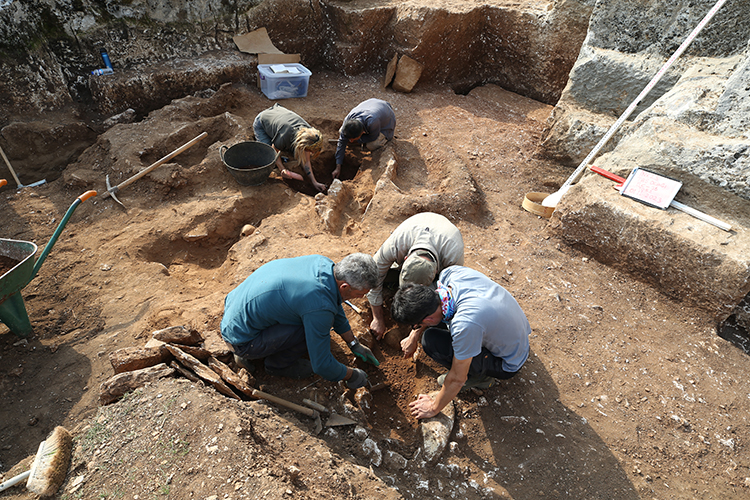
Stating that they reached children’s graves during the excavations, Diyarbakır Acting Museum Director Müjdat Gizligöl said, “We have found 50 graves so far in the excavations in İnkaya Neighborhood. Today we reached 4 graves. Removal operations are currently underway. So we know that there are 54 graves in total. In this respect, it is a very interesting result for us. Probably after this place was used as a quarry, it was turned into a necropolis (where mass graves are found) and only children were buried here.”
Stating that they found more than one child buried in some of the graves, Gizligöl said, “Limestone cists were formed around the graves and covered with limestone. The graves are in the east-west direction, there is no random burial.”
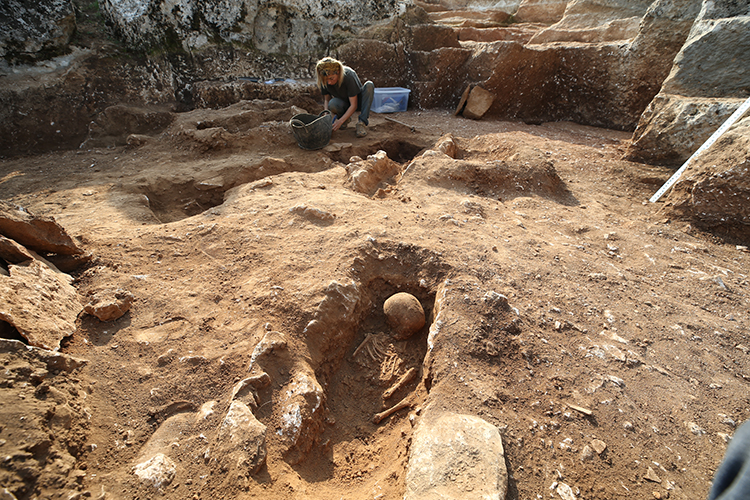
Dr. Nazlı Akbaş, a research assistant and anthropologist at Gaziantep University Institute of Social Sciences, told AA correspondent.
“Since there was a ‘saint’ and ‘martyr’ culture in early Byzantium, in-settlement burials can occur in churches. In this area, which we call the quarry, only graves belonging to infants and children between the ages of 0 and 6 were found.”
Stating that they do not think that the infants and children died due to any epidemic in line with the preliminary examination, Akbaş said that detailed skeletal studies have not yet been carried out.
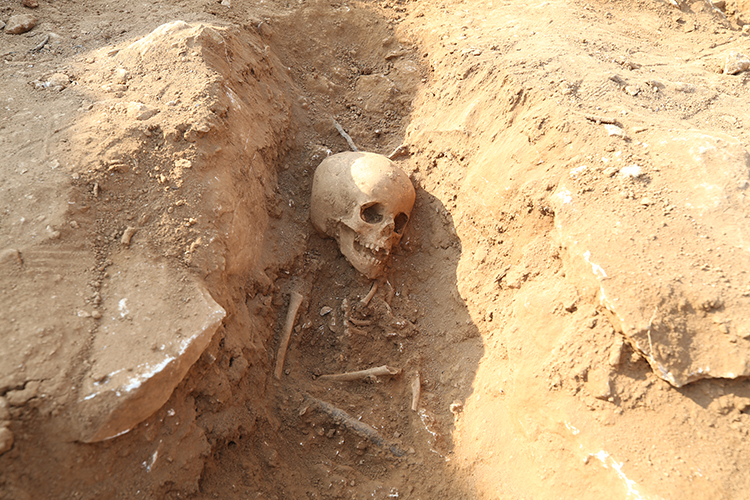
Diseases detected in some children
Stating that they detected some diseases in preliminary examinations, Akbaş said
“Anemia was a very common disease for this period and this geography. But there is no sign of an epidemic that we observed in all of them. We think that the burial of babies in the area in question is related to the baptism culture in the early Byzantine period of Christianity. In early Christianity, it was usually adults who were baptized. After the 10th century, it was legalized that children should be baptized. We think that these belong to the early Christian period. Therefore, they are unbaptized babies and children who are not yet Christians. Since they were not baptized, we think that they may have been buried outside the church rather than inside the church.”
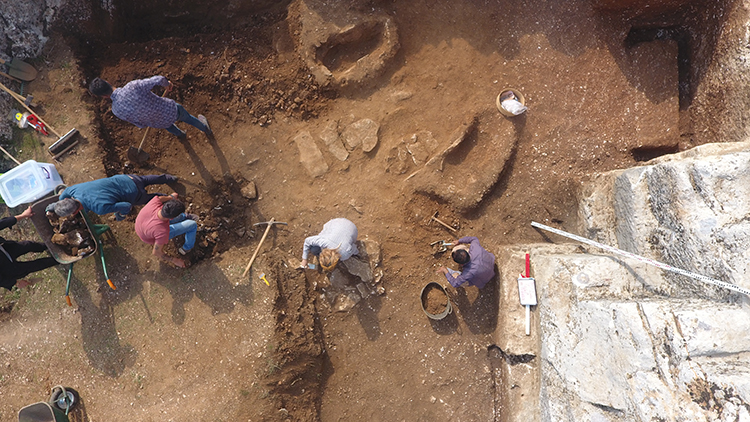
Stating that an example of a grave where children were buried was also found in the excavations of Amorium in Afyonkarahisar, Akbaş said that only babies and children were buried in a certain area of the cemetery dated to the 10th and 11th centuries, and that a baptistery was found near the cemetery, but no baptistery was found in the excavations in Kulp.
Cover Photo: Bestami Bodruk/AA
You may also like
- A 1700-year-old statue of Pan unearthed during the excavations at Polyeuktos in İstanbul
- The granary was found in the ancient city of Sebaste, founded by the first Roman emperor Augustus
- Donalar Kale Kapı Rock Tomb or Donalar Rock Tomb
- Theater emerges as works continue in ancient city of Perinthos
- Urartian King Argishti’s bronze shield revealed the name of an unknown country
- The religious center of Lycia, the ancient city of Letoon
- Who were the Luwians?
- A new study brings a fresh perspective on the Anatolian origin of the Indo-European languages
- Perhaps the oldest thermal treatment center in the world, which has been in continuous use for 2000 years -Basilica Therma Roman Bath or King’s Daughter-
- The largest synagogue of the ancient world, located in the ancient city of Sardis, is being restored











Leave a Reply